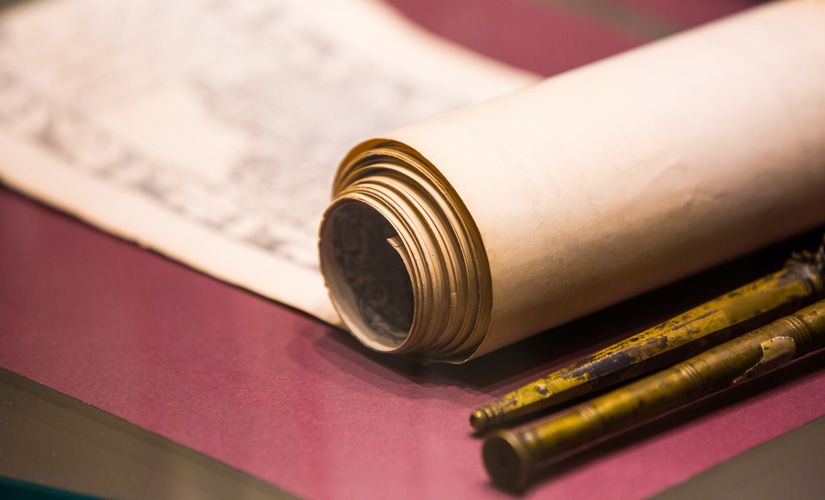After seventy years in exile, the exiled people of Judah were permitted to return to their ancestral home in and around Jerusalem. Did they come singing and celebrating? Or did they come with some trepidation—their long-held hopes finally materializing? Some may even have dragged their feet, lamenting the life they left behind in captivity. Many decided to stay in exile; why relocate when they had settled into houses, planted gardens, and had families (Jeremiah 29:4-7)?
As the Bible narrates it, the nation of Israel split into two kingdoms after Solomon’s reign (see 1 Kings 12:1-20). The Assyrians conquered the northern kingdom of Israel in 722 BC. Then, not even a century and a half later, the Babylonians conquered the southern kingdom of Judah and destroyed Solomon’s Temple in Jerusalem—the dynamic center of Jewish life and identity. Many of Judah’s leading residents were taken into exile.
Now decades later, as the exiles returned (538 BC), this crisis still marked Judah’s identity, politically and theologically. Those returning found themselves searching to understand themselves and their God after the exile. Their search led to a renewed interest in interpreting the law that defined them as a people.
Gathering sacred texts
During this time of resettling into Jerusalem, the Jewish people began to collect and edit their writings in a more formal fashion. These were the texts that oriented them as a people, telling them who they were and where they came from. Many of these had originally been oral traditions, shared among different communities and then recorded and copied over centuries. They copied narratives, oracles, poetry, prophecies. Other texts gave a record of the law that God gave Moses—not just the Ten Commandments, but hundreds of detailed laws that help them live as God’s beloved and chosen people. They studied closely the texts that warned about the cost of disobedience.
These writings became the unifying pulse of Israel, a record of their history and a way forward in faithfulness to God. Today, Jews often refer to their Scriptures as the Tanakh, which is a Hebrew acronym. The T-N-K stands for T = Torah (Law); N = Nevi’im (Prophets); and K = Ketuvim (Writings).
Following (and Understanding) Jesus
Jesus was born into this people. These stories were his stories, this ancestry his ancestry. He grew up reading and studying the law, soon exhibiting an advanced understanding (Luke 2:41-52). In inaugurating his ministry, Jesus stood up in the local assembly and read from the prophet Isaiah’s scroll saying, “This passage of scripture has come true today, as you heard it being read” (Luke 4:16-21).
Jesus’s first followers accepted the Jewish Scriptures as their Scriptures. Even when non-Jewish people joined the church, these Hebrew writings were seen as a primary sourcebook for faith, for understanding Jesus, and for understanding their new Christian identity as adopted members of God’s family. These writings—ultimately arranged in a slightly different order—became the Christian Old Testament.
Developing the New Testament
Over time, the church gathered other writings that were distinctly its own, as Jesus’s followers attested to his life, death, and resurrection and the development of the early church. These became the New Testament.
It seems likely that most authors of the Christian New Testament did not set out to write Scripture. The apostle Paul is a good example of this: letters were one of his few options for pastoral communication because of his constant travel as a missionary. His letters speak first to specific circumstances and churches. Still, whatever the writers’ intentions, the church has recognized over time that the New Testament authors wrote under the inspiration of the Holy Spirit and that the Holy Spirit has continued to use their writing.
The Gospels most likely first circulated orally. People told stories about Jesus’s life, death, and resurrection. These stories then circulated among the earliest churches. As the eyewitnesses became scarcer, the stories of Jesus were committed to writing. Relatively early, within the second century after Jesus’s birth, the four Gospels were collected and began circulating together. These are four undeniably different, yet coherent, testimonies to Jesus.
Establishing the canon of Scripture
Over time, Christians had a whole collection of writings about Jesus. They needed to decide which were authoritative, truly inspired by the Holy Spirit. They needed to settle on a “canon” of Scripture.
“Canon” comes from a Greek word that means measuring stick or rule. When speaking of Scripture, the term refers to the set of writings that are considered sacred by a religious tradition. In Christianity, the canon is the list of books that we accept as authoritative—the books that make up the Bible.
Church councils made formal decisions about the canon, but it is more accurate to say that the church determined its components informally. Some historians cite the Synod of Hippo (AD 394) as the final church council to approve the canon. But the main contours of the Christian Scriptures had already been settled by centuries of use by that time! In 185 AD the church father Irenaeus argued the theological rationale behind the already widespread practice of accepting only four Gospels. Even further back, the writer of 2 Peter compares the apostle Paul’s letters to “the other Scriptures” (3:15-16). And the books later “canonized” as Scripture were used in church worship services, copied for other congregations, and circulated wherever the followers of Jesus went. These were the writings that believers determined pointed Christians most faithfully to Jesus.
Determining the criteria
When it was time to officially put together the canon of the New Testament, the discussions were already limited, so to speak, to these widely used books. One of the main criteria for including a text in the canon was its use in worship services.
But the most important factor for deciding which books to include in the canon was whether its writer had firsthand or secondhand knowledge of the resurrected Jesus. We call this “apostolicity.” Was the author present during Jesus’s ministry? Did they know Jesus? Did this writer learn from someone who followed Jesus firsthand? Christian communities held in highest esteem the authors about whom they could answer “yes” to one of these questions.
All Christians now use the same New Testament, but the exact list of books in the Old Testament canon varies somewhat between traditions. All Christians accept the books in the Tanakh, the Jewish Scriptures, which were written originally in Hebrew (plus about 1 percent written in Aramaic). Roman Catholics and Orthodox Christians also include in the Old Testament portion of their Bibles a selection of other Jewish writings that have come down to us only in Greek. These Greek books and sections (like additional chapters added to Daniel) were part of the ancient Greek translation of the Hebrew Bible referred to as the Septuagint, translated before the birth of Jesus. These books are called Deuterocanonical (“second canon”). Also known as the “Apocrypha,” you will sometimes find these books included as a separate section in some editions of the Bible.
Rebuffing Heresies
One driving motivation in creating a clear canon of Scripture was to counter heresies, teaching that diverged from the church’s understanding of its faith. For example, Marcion (d. 160) was a church leader who seems to have wanted to eradicate all “Jewishness” from the Christian Scriptures. In response to his challenge, the church was pressed to think through and articulate their acceptance of the Old Testament and affirm the evidence of Jesus’s Jewishness in the Gospels.
At several points in its first centuries, Christianity was outlawed and persecuted as subversive. When the Emperor Constantine decriminalized Christianity (313 AD), he asked for authoritative copies of the Christian Scriptures, prompting church leaders to make decisions about what belonged (and didn’t).
Many scholars cite as evidence of a church-wide consensus a letter that Bishop Athanasius sent out for Easter in 367 that reflects a formalization of the canon’s limits. Scholars remind us that while the ancient churches did not have absolute uniformity on the canon, their debates about the inclusion of some writings focused on books on the fringes, not those at the center of Christian usage and faith.
Identifying Fringe Books
We still have some of these fringe books. We call them noncanonical. These were books written and read by Christians or Christian sects (often Gnostic groups) that have not been included in the canon and are not used in Christian teaching. Most never caught on, though some were quite popular. The most sensational of these include some stories of Jesus. For instance, the Protoevangelium of James includes an action-packed story of Mary’s birth and the birth of Jesus.
Occasionally a text fragment or gnostic writing will surface and make headlines today. In 2004, for example, scholars announced the rediscovery of an obscure and fragmentary gnostic text called the Gospel of Judas. While these are sometimes reported as monumental findings, books without any ongoing readership usually represent even more “fringy” groups whose writings had a limited audience.
In our digital age, access to manuscripts, whether isolated “fringe” fragments or the most ancient and reliable collections of canonical Scriptures, is simple (for example, see csntm.org and codexsinaiticus.org/en/).
Spreading the Word
We still have tens of thousands of New Testament manuscripts in Greek, Latin, and other ancient languages, from tiny fragments to full books. (The handwritten manuscripts we study today to determine the most reliable text of the New Testament come from the earliest centuries of Christian faith all the way through to the Reformation, with special weight given to the most ancient copies.) The work that these copies represent is often taken for granted in societies like ours where books are plentiful and usually cheap. But in the ancient world, copies were undertaken at great expense of time, materials, and scribal expertise, not to mention the costs and difficulties of transportation.
Given this, it may come as a surprise that early Christians did not continue their Jewish counterparts’ concern for absolute precision in copying Scripture. Jewish scribes labored to produce exact copies of the Torah, using techniques including counting how many letters belonged in each line. Once a Jewish community had replaced a worn-out copy with a new one, the old one would be disposed of honorably by burning or burial.
While Christian copyists were not this precise, they were not haphazard either in transmitting the stories of Jesus. No two early manuscripts are identical, but there is 99 percent agreement across the manuscripts. The most frequent variations are minor differences like spelling errors, words left out or duplicated, and harmonization (such as a making a story in Mark sound more like its version in Matthew). The major variations are few and do not affect matters of doctrine (most Bibles printed today note the two most significant textual variants—Mark 16:9-20 and John 8:1-11—which are missing in some early copies of the Gospels).
The lack of identical copies shows us something about early Christians’ main priority, which was evangelistic. Their primary concern seems to have been with reproducing and distributing literature about Jesus. In other words, they wanted to follow the great commission and go “to all peoples everywhere” to make disciples for Jesus (Matthew 28:16-20). Their goal was to spread the word and nourish their rapidly expanding churches.
Times of crisis and change have sparked people of faith to return to their Scriptures, to read them anew to make sense of their time. From Israel’s exile to the rapid expansion of early Christian churches, the Spirit has been faithful to use the Bible—read, copied, interpreted, and shared by real people—to forge a way forward in unsettling times.
Read more posts about: Understanding Scripture, Biblical Context
Thanks to the support of our faithful financial partners, American Bible Society has been engaging people with the life-changing message of God’s Word for more than 200 years.
Help us share God's Word where
needed most.
Sign up to receive Bible-reading tips, tools and resources.




